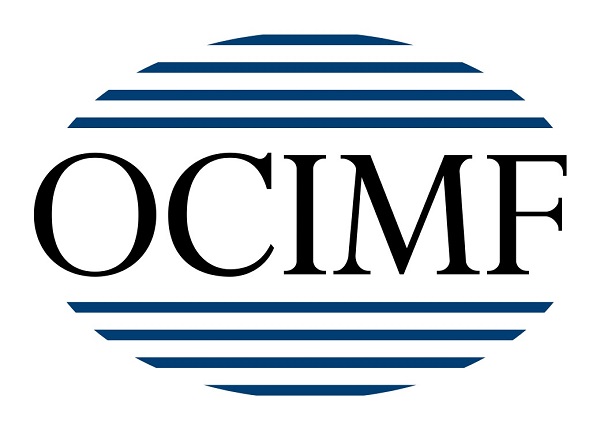The blockchain-enabled Global Shipping Business Network (GSBN) platform could well be up and running by the end of the year while the TradeLens platform has now attracted its first banking sector user. Brian Dixon looks at the growth of the technology everyone pretends to understand.
Blockchain technology continues to win advocates that see the essentially unalterable digital ledger it offers as providing a secure and cost-effective means of simplifying transactions and ergo supply chains in an otherwise increasingly complex and increasingly globalised ‘trade ecosystem’. Rather than using much slower manual paper-based systems that can not only incur their own costs, but which are also susceptible to delays, errors and potential fraud, blockchains, so the argument goes, enable the diverse players involved in, for instance, the movement of containerised cargo to rapidly and securely share sensitive information while enjoying a high degree of trust and visibility.
What’s more, the escalating use of blockchain-enabled platforms has now taken a further step forward with the signing of an agreement by nine ocean carriers and terminal operators to become shareholders in the proposed GSBN . As such, these nine shareholders, viz CMA CGM, COSCO Shipping Lines, COSCO Shipping Ports, Hapag-Lloyd, Hutchison Ports, OOCL, the Port of Qingdao, PSA International and Shanghai International Port Group (SIPG), have duly confirmed their commitment to the nature and governance structure of the platform, which will be operated by Hong Kong-headquartered CargoSmart.
“The signing of the agreement symbolised the fortified cooperation among the nine shareholders to work together on the consortium formation. After the shareholder agreement, GSBN will be set up as a not-for-profit joint-venture entity once the relevant regulatory approvals are obtained,” CargoSmart reports. While the precise timeline for attaining the applicable green lights “is subject to [the] different authorities’ approval processes and lead times”, the company expects this to have been completed “before [the] end of 2020”.
When this happens, the potential benefits for users will arguably be manifold. “GSBN is aimed to accelerate the digital transformation of the shipping industry by providing a platform for all shipping supply chain participants to work collaboratively to accelerate technology innovation and develop solutions through trusted and secure data exchange platforms,” CargoSmart states, adding that GSBN also “intends to build up an open and transparent ecosystem for all stakeholders along the supply chain by leveraging blockchain technology”.
“The container shipping industry,” the company continues, “is often characterised by disparate processes that take place across both physical and digital domains. Companies are increasingly looking towards digital technologies to resolve siloed shipment management procedures and disruptive information gaps. The consortium will offer a forum to address these challenges, explore cross-industry opportunities and empower future innovation and insights.”
Moreover, the “collaboration between carriers and terminals” makes the GSBN platform “unique in the market”, allowing it “to unlock underlying value and create exciting new opportunities for all shipping supply chain participants”. On top of this, “it brings up new ideas to transform the industry by going beyond the conventional carrier-centric business model”.
Importantly, given the sensitive nature of the information it will handle, the GSBN platform, CargoSmart states, “is expected to follow strong data governance” with users retaining full control of any submitted data. Similarly, in a bid to encourage participation by all relevant supply chain actors, the platform will be managed in such a way as to ensure it remains transparent and fair.
Indeed, when it comes to encouraging participation, CargoSmart reveals that while the GSBN platform is still awaiting regulatory approval, the company is currently “engaging with customers in solution pilots that are based on the GSBN blockchain technology and framework”.
And while it remains to be seen when exactly the platform will receive all the required thumbs-ups from the regulators, the fact remains that interest in the platform has proven healthy. “[The] overall reaction has been positive as a platform allowing secured, trusted and instant data sharing would be a long-awaited solution for stakeholders along the supply chain,” it says.
Meanwhile, the ongoing evolution of TradeLens continues apace, with Standard Chartered Bank (SCB) having now become the first financial institution to formally join the blockchain-enabled platform, itself developed jointly by Maersk and IBM. As a result, the Bank, TradeLens asserts, will now “be able to instantly validate the authenticity of shipments” using the platform’s “extensive record of real-time data and document exchange amongst the network of entities involved in a shipment”.
The contemporary trade environment, says Aarthi Fernandez, SCB’s COO trade, Singapore and South East Asia and global head of trade operations, is characterised by “complex processes, slow turnaround times, high paper-based manual documentation and limited connectivity between the various parties involved”. This, he continues, “remains a major pain point in the centuries-old trade finance industry”. However, the partnership with TradeLens provides the Bank with “reliable real-time information to validate and protect the integrity of transactions and thus deliver fast and safe service” to its clients.

































